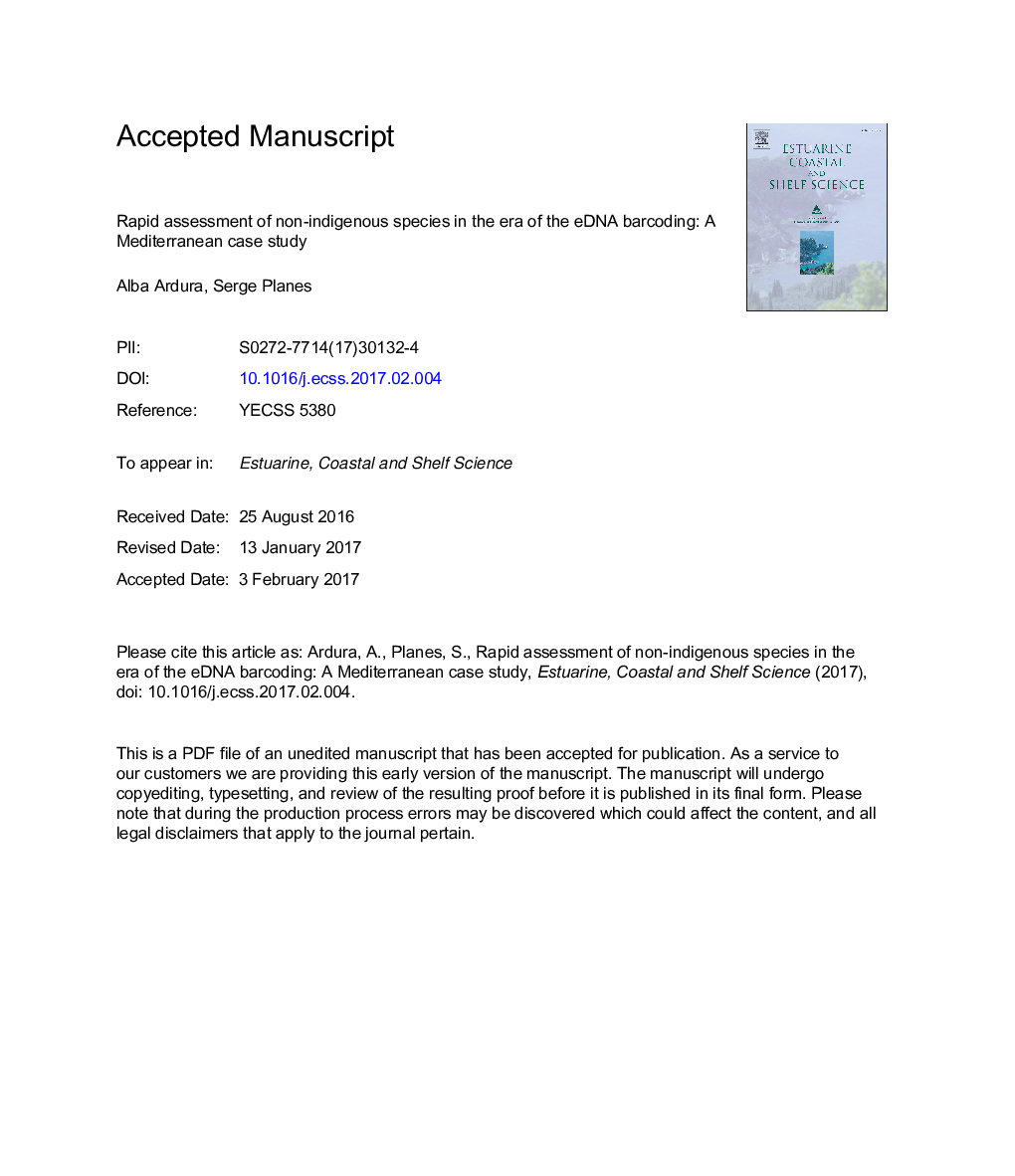| Article ID | Journal | Published Year | Pages | File Type |
|---|---|---|---|---|
| 5765353 | Estuarine, Coastal and Shelf Science | 2017 | 26 Pages |
Abstract
With only a narrow opening through the Gibraltar and Suez Canals, the Mediterranean Sea is one of the largest semi-enclosed seas. The marine flora and fauna are some of the richest in the world, relative to its size, particularly in the coastal habitats, which are also characterized by numerous endemic species although the introduction of non-indigenous species threatens its rich and unique biodiversity. Following the opening of the Suez Canal, and in combination with shipping and aquaculture activities, non-indigenous species (NIS) introduction has had measurable impacts on the Mediterranean. Lagoon ecosystems along the French coastline, with approx. 100 NIS identified, are considered hot-spot areas for these species. Rapid assessment sampling for sessile benthic species together with DNA barcoding is a rapid, easy and cheap method to detect non-indigenous species. Two nearby and different ecosystems were sampled for invertebrate species: Saint-Nazaire lagoon, a Special Protection Area within the Natura 2000 Network and Canet port, a marina in a small village. The DNA barcoding tool for species identification was used for confirming the taxonomy. This showed that, despite the Saint-Nazaire Lagoon classification within the Natura 2000 network, it is already contaminated with a single NIS that was found in high densities and is clearly beginning to dominate the system. It is proposed that a rapid assessment of the sampled environment and the DNA barcode approach are efficient and can provide sufficient information on the new target species to be used in conservation planning and ongoing management efforts.
Related Topics
Physical Sciences and Engineering
Earth and Planetary Sciences
Geology
Authors
Alba Ardura, Serge Planes,
